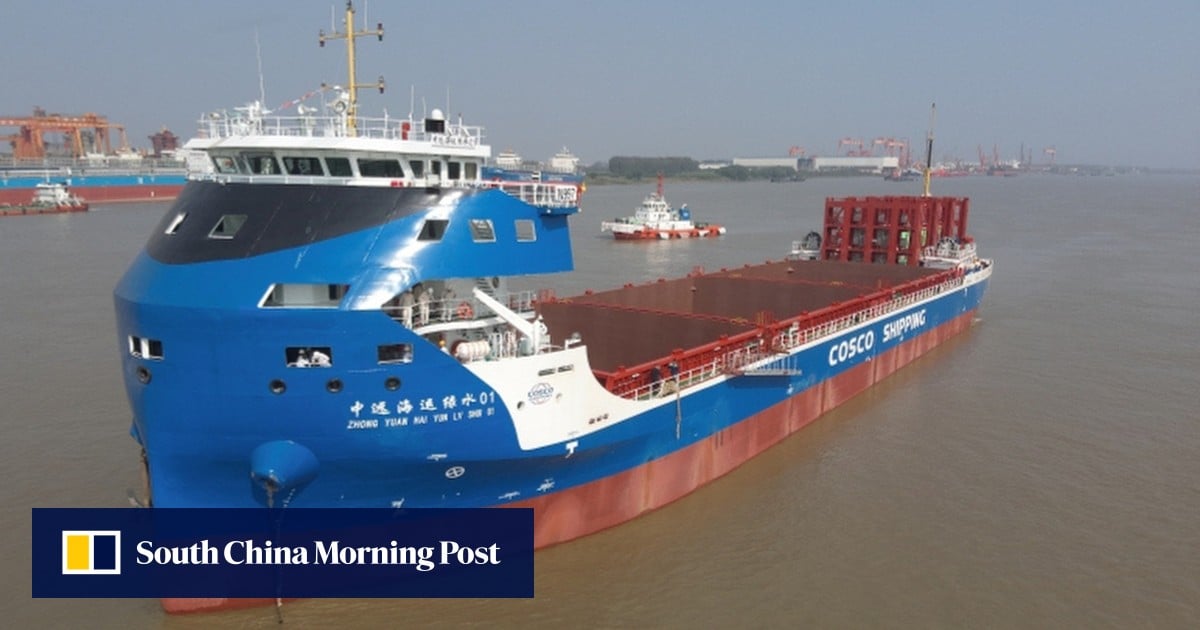World
World’s largest electric container ship starts service between Chinese cities

It can save 3,900kg (8,600 pounds) of fuel for each 100 nautical miles it sails, cutting carbon dioxide emissions by 12.4 tonnes.
The vessel has broken a number of world records when it comes to electric container ships, Cosco said, including its length, moulded breadth, number of containers it holds, deadweight tonnage and battery capacity.
The ship is equipped with a main battery of more than 50,000 kilowatt-hours, while more battery boxes could be added for longer voyages.
Battery boxes containing 1,600kWh of electricity, of sizes similar to standard 20-foot containers, can be loaded onto the cargo ship to increase its travel range.
The electric vessel is around 120 metres (394 feet) long and 24 metres wide – about the size of 10 basketball courts. Its maximum speed is around 19km/h (12mph).
After docking, officers from the port will inspect the battery packs as well as the fire detection and alarm system of the battery compartment on board.
Yangshan Port officer in Shanghai, Zhang Lifu, told CCTV that crew members had received special fire training to handle any emergencies.
“For this fire extinguishing method, the most challenging part is to train the crew members so that they can detect the fire accident in the battery boxes in advance and take emergency responses as required. This is our major focus.”










